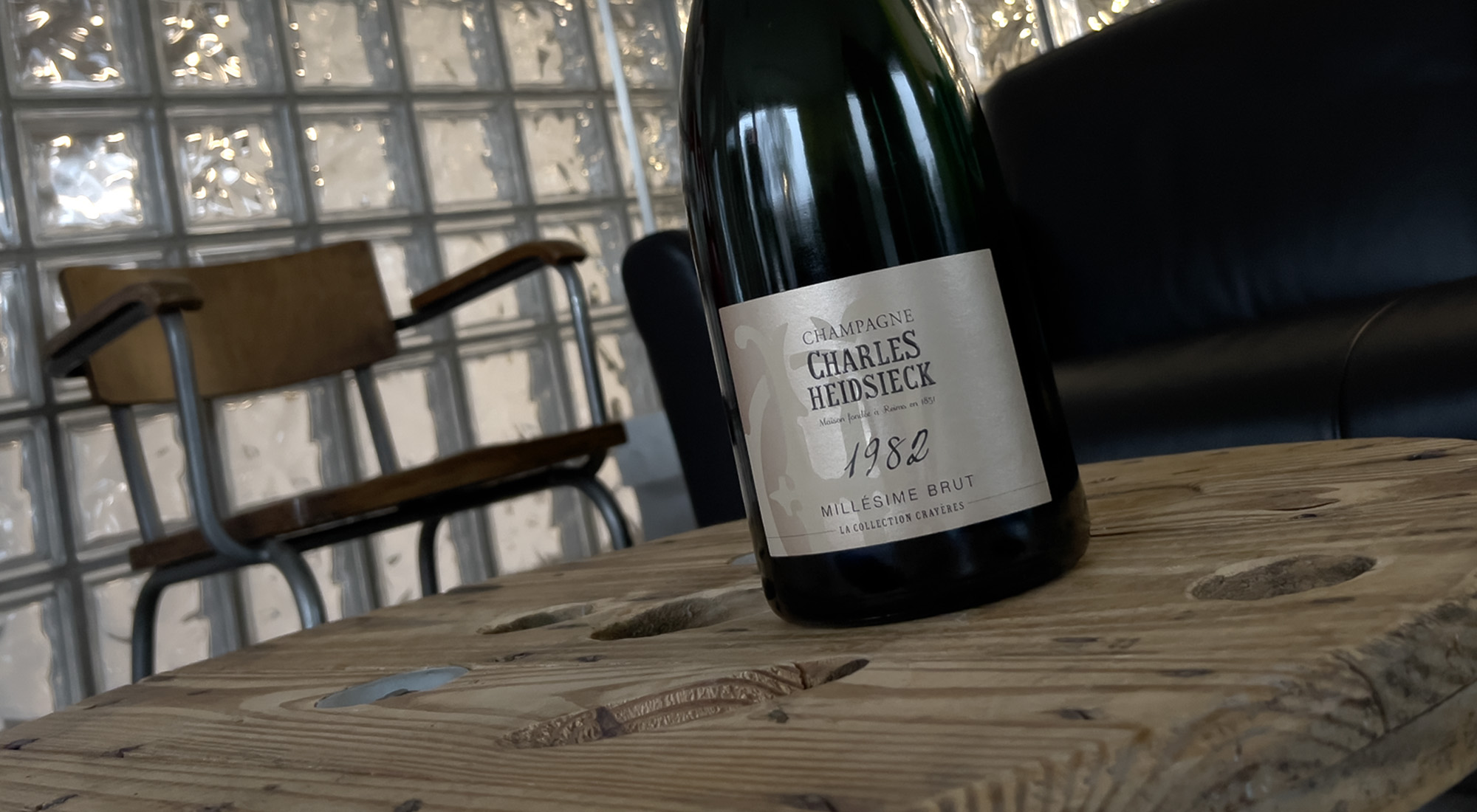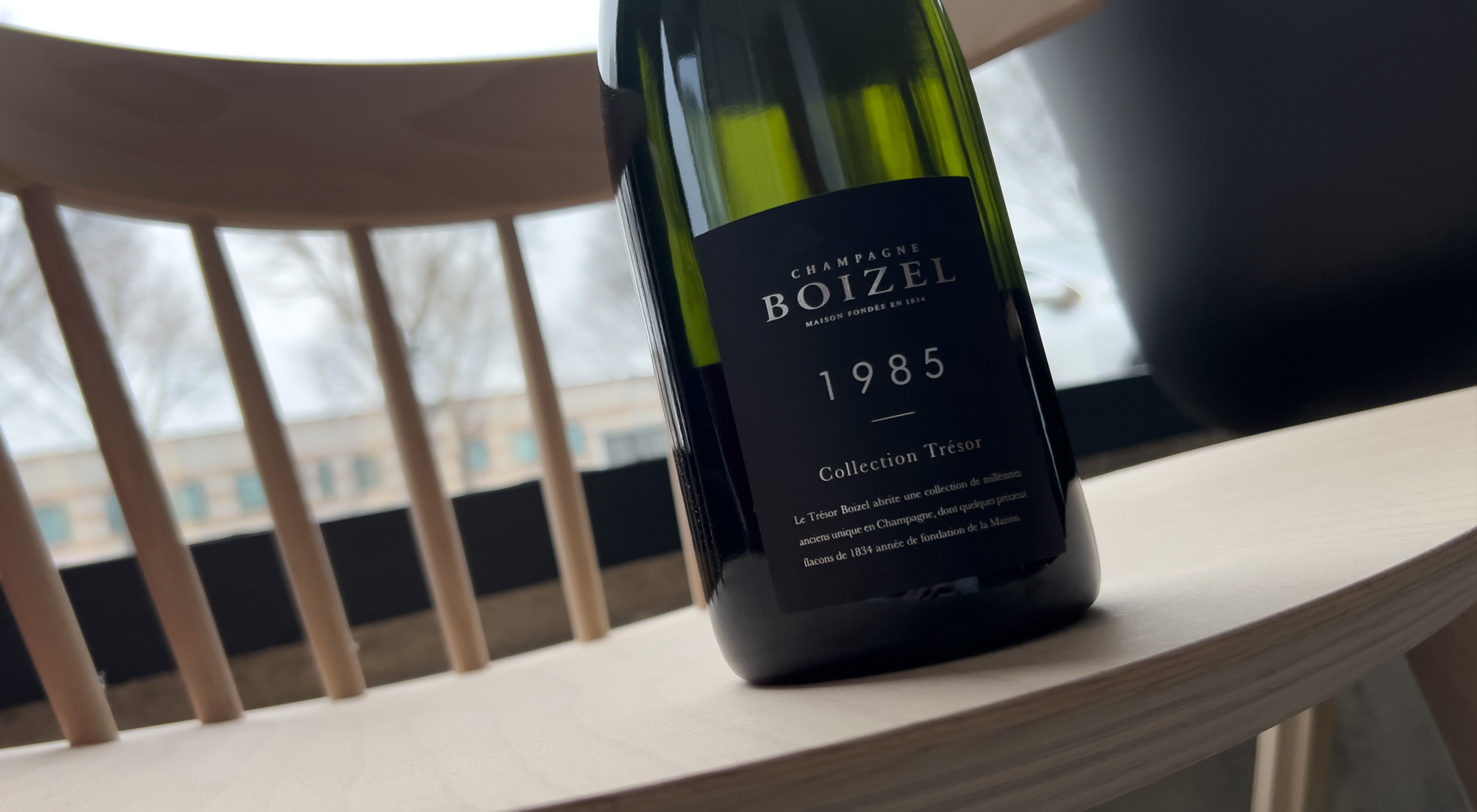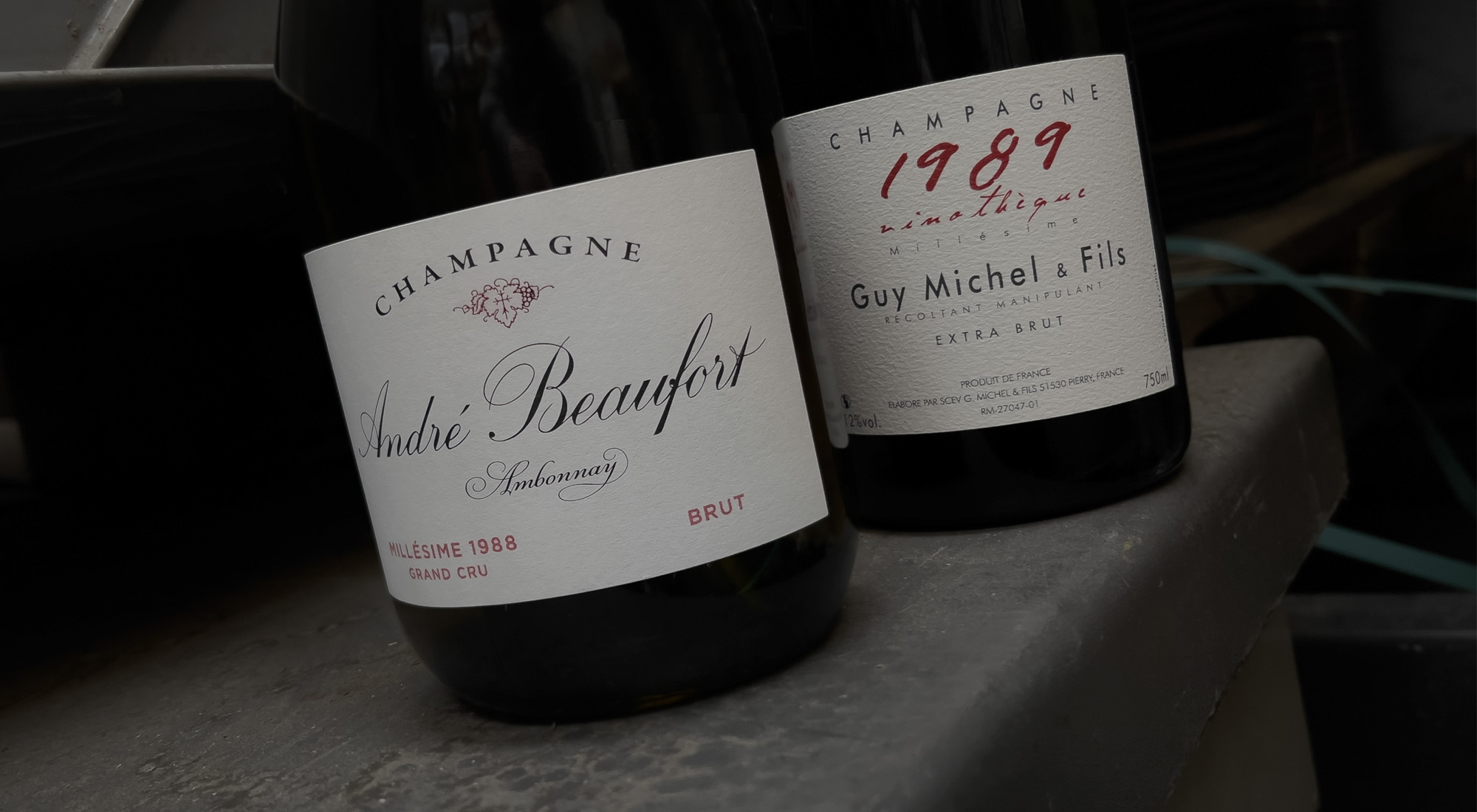Featured item Culture Actuality
Our journey to discover the best vintages back in time continues. If in the last twenty years the excellent vintages, i.e. those ranked* with 5 stars (on a scale from 0 to 5) can be traced back to the vintages 2002, 2008 and 2012 (we talked about it here: 2000-2009: What is the best vintage in Champagne?; 2010-2019: What is the best vintage in Champagne?); what were those from the 80s?
The classification of vintages is indicated in ⭐: from a maximum of five, attributed to excellent years, to a minimum of zero/one star for the worst ones. In the following paragraphs we will discover the ranking* of the best vintages (4 and 5 stars) of the years 1980-1989, accompanied by a selection of Champagnes that you can find in our online store.

- 1982: 5 ⭐⭐⭐⭐⭐
1980 seemed like a promising year, but if the start was good, the cold and rains of the summer and of September definitively consecrated it as an unlucky vintage (1 star). There are few witness wines of this vintage and those available can be uninspiring. Our advice? Don't dwell too much on the Millésime 1980, you could be really disappointed.
The 1981, classified with 3 stars, was better: a challenging vintage for winemakers who had to face a reduced budding due to the problematic conditions of the previous year and the spring frosts which further limited yields by almost 25%. However, overall, a vintage that produced delicious wines.
The stable climatic conditions and the warm and sunny pre-harvest temperatures returned the quantity and quality of the grapes for a 5-star 1982 vintage. Overall a superb year: the best wines are still viable and even if most of these are, to date, to be considered mature, they continue to be rich wines with a good balance between structure and freshness.
Our advice: Champagne La Collection Crayères Millésime 1982, Charles Heidsieck

- 1985: 5 ⭐⭐⭐⭐⭐
Although 1983 was a year of abundant harvests, the quality is not comparable to the previous year of '82 (3-star rating). The main causes? A delay in budding, downy mildew problems during the growing season and a derogation from the pressing rules which benefited quantity at the expense of quality. Specifically, producers were allowed to press 150 kg of fruit per hectolitre (instead of 160 kg), with a 6.25% relaxation of the requirements.
1984, on the other hand, was a disastrous year. The incessant rains during the spring slowed down the ripening and favored widespread rot phenomena throughout the Champenois vineyard. Vote 0.
1985, on the other hand, was a magnificent year, to be sought out. The cold temperatures until April caused damage to the vineyards with more than 2,000 hectares of vines to be replanted; however, the benevolent conditions of the summer favored the ripening of the remaining grapes and those that were formed subsequently, with bunches grown throughout the month of September. Therefore, a vintage characterized by a reduced yield but which returned concentrated and fresh wines. The best wines are still maturing and should continue to refine for years to come.
Our advice: Champagne Extra Brut Collection Trésor 1985, Boizel

- 1988: 5 ⭐⭐⭐⭐⭐
1986 and 1987 were two challenging years from a climatic point of view. The 1986 hail damaged the harvest in August, the harvest was late and, although it began with warm temperatures, the subsequent rains made a rigorous selection of the grapes necessary. 1987 was even more disastrous: the spring characterized by hail and rain and the severe frost of 23 May interrupted flowering, favoring the millerandage phenomenon. The harvest was postponed until 8 October, but, nevertheless, it is remembered in the annals as an "apocalyptic" harvest.
But if 1986 remains, despite everything, a vintage to be tasted with a 2-star rating (surprising how delicious wines such as Krug Clos du Mesnil, Dom Ruinart, Selosse have been created…), on the contrary, that of 1987 is certainly not to be sought . Vote 0.
A fresh vintage that of 1988, which stood out for its short harvest and which returned superb wines with character. Even if the opinions at the time of the harvest were mixed, the pleasure in the wines has been revealed over time, so much so that the 1988 deserves to be classified as one of the great 5-star vintages. Warm but humid winter and budding at the end of April which laid the foundations for a good season, hail in May which caused some damage; nevertheless flowering was rapid, complete and resulted in a good harvest. An excellent vintage that of 1988 is considered successful above all for the Chardonnay, in which lively acidity is accompanied by a good concentration of taste: Krug Clos du Mesnil, Salon, Cristal are a unique experience to be enjoyed at least once in a lifetime.
Our advice:
Champagne Collection Millésime D'or Magnum 1988, Pommery
Champagne Brut Ambonnay Vinothèque 1988, André Beaufort
A hot year characterized by an early harvest and a yield higher than that of 1988. A 3-star vintage whose wines are certainly pleasant, but which nonetheless lack that freshness that characterizes the best vintages. Guy Michel's Vinothèque Millésime Champagnes are the result of a collection of the best vintages stored on their yeasts and recently degorged. Try his Millésime 1989, produced in extremely limited quantities.
*Ranking extracted from the book “Vintage Champagne 1899 to 2019” 2020 by Charles Curtis MW, author, journalist and wine consultant, former head of Christie's wine department in New York and Asia.
Discover here the whole selection of GLUGULP! Champagnes and search for your favorite vintages
